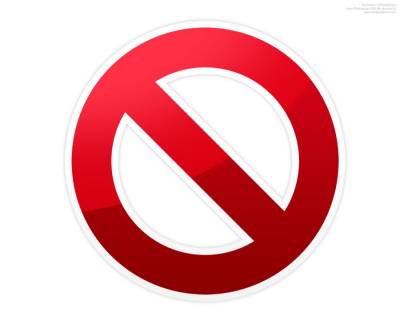Many organizations which Coherent Marketing has helped know they need a plan to get set up their social media, but aren't sure where to start, or even why, other than everybody else seems to be doing it. Social media for B2B makes good business sense, particularly when allied with content marketing. Content marketing is a marketing approach that uses the online content for marketing and social media provides a powerful mechanism for distribution and discovery that extends the visibility of your website. It can also be highly cost-effective.
But many companies and organizations, both large and small, don’t know where to start when trying to build a social media presence. Assisting organizations set up and successfully manage the content workflows for effective social media use is something Coherent Marketing does. Here are some pointers.
 Assess
Assess
If your social media approach has been ad hoc, you will need to clean up social media accounts that were started before you began a structured approach. If your company has no social media accounts, that's always easier; go ahead and create them. However, before you create any, check on the availability of a consistent social media account name across as many accounts as possible for unified, simple social media branding. The sites you decide to set up will depend on the type of business you have, but from a B2B standpoint, the main four currently are Twitter, Facebook, LinkedIn, and Google+. If you are location-based, like a restaurant, you may want to look at Yelp and Foursquare, too.
 Design
Design
Make sure when you start up your social media accounts that they are well branded and reflect the company's colors, tone and look as a whole. Don't tweet with an egg when you have a company logo. Take the time to set up your pages properly. Choose your words carefully when describing your social media page. Make sure your header images and page backgrounds are evocative of the type of work or sector you represent. CONTACT US if you'd like us to set up your pages for you.
 Measure
Measure
If you have social media accounts established, obtain baseline measurements before you begin the process of improving your social presence. Social media can be time intensive, depending on how it's used, so consider measurement and scheduling tools. Spredfast is one, but there are others like Hootsuite for smaller companies on a limited budget. There are also other utilities that enable you to track follower gains and losses and trends like Twittercounter.
 Connect
Connect
In the beginning, you won't have many followers. Begin by connecting with people who do and who are actively engaged in your field of expertise or industry sector. Follow them, share content of theirs that you find relevant and retweet them. Build a network with people who already have networks. When they reciprocate by sharing your content or mentioning you, you gain from their network influence and can use their influence to grow your own following.
In addition to connecting with influencers, go through your contacts list, partners, suppliers and others with whom you are connected outside of social media and connect with them.
 Share
Share
Initially, while you are still developing your content workflow processes, don't think you need not have any social presence. Begin by curating content. Find information that others have already created and share that content. Part of this capability is in following interesting accounts, companies and people, who are already producing interesting content. Just make sure content you reshare or redistribute is relevant to your audience and interesting.
Apart from redistributing interesting content, be human. Remember holidays and key calendar events such as the big national conferences for your sector and engage with people about those. Wish them a good National Manufacturing Awareness Day.
 Multimedia content
Multimedia content
Where possible, share images, videos, graphs and charts in addition to text. The ratio of clicks for content with images is significantly higher than for plain text. Remember too, that generating content doesn't have to mean text. It is possible to shoot an interview with an expert or the CEO and post a podcast or a video of that interview and the text transcript as well. Content can also be generated from charts and Excel spreadsheets and turned into infographics with a short contextual explanation for readers to quickly grasp the point of the infographic. Or you can just use pictures. For more on using multimedia content for content marketing, see our earlier blog titled 'MAKING VIDEO WORK FOR CONTENT MARKETING'.
 Blog
Blog
Company blogs provide an opportunity for sharing news, events, insights, best practices and experience. Demonstrate your knowledge in the subjects in which your company is engaged and active. Although there are many free and easy platforms on which companies can blog such as Blogger, Wordpress or Tumblr, none of those platforms can be integrated directly into your website or attract traffic directly to your site. So although they are very easy to use, spend the money to integrated a blog platform directly into your website so that traffic to your blog is also already on your site.
Secondly, make sure your blog is active. An inactive blog is the kiss of death. It creates more negative perceptions for an organization than value. Additionally, an active or blog to which authoritative content is posted can generate good value for Search Engine Optimization (SEO). For larger companies or organizations, a blog that is active is easier. But even for smaller organizations, developing a content diary and planning for content well in advance provides a way to spread the load and obtain quality content. It's easier for 10 people to set aside the hour it takes to write content over 10 months than for one person to write 10 posts - unless it's their job, of course. But one hour every few months is a task that is much more easily digested than demands on a team that previously never had to blog.
 Unique content
Unique content
Each organization will need to determine the best location for unique content. Often the blog platform will be the best place because they usually have capabilities to share, comment and link to. But unique content can take a number of forms. It can be anything from a whitepaper to a video or a webinar. Keep track of trends to your site. Compelling content enables you more easily to obtain contact information for additional marketing such as eNewsletters and sales follow-ups. For more sophisticated content creation, particularly eNewsletters, it is possible to do split mailings with different content, subject lines and images to see which approaches get the most traction and generate the most leads.
 Metrics
Metrics
For organizations with the budgets to do this, as you set up your social media channels and your content development workflow processes, you should also set up a mechanism to track leads from your content. Content Relationship Management tools and other utilities can help with this. Remember, though, that social media is often a first-click rather than a last-click metric, so make sure you are able to factor that it. Use of unique identifiers and landing pages can assist with this, too. Keep an eye on social measurements like share of voice, engagement, RTs (retweets), Likes etc. But view thos social measures alongside your Google Analytics to unique landing pages and other tracking mechanisms so that you can more accurately identify which leads in the pipeline are coming from social media efforts. And remember that some of these efforts will be impossible to quantify easily, too. Improved SEO from content marketing will result in better search page rankings and those in turn will provide improved, but non-specific results.
 Integrated marketing
Integrated marketing
Your social media and content marketing should not be separate from your overall marketing plan; instead it should be an integral part of it . Often due to the way in which organizations are siloed, this can be difficult, particularly when content may be coming from technical authors, public relations is sharing material with the news media and other stakeholders, writing is from business commmunications, social media from whichever department inherited their budget, and advertising, events and sales from other departments. Media, content and marketing should all be on the same page. If not, problems will arise.
 Review
Review
Develop a plan to measure and review metrics and trends by campaign, monthly and quarterly. Find a cycle that accurately reflects shifts in key metrics. Monthly measurements may be too short to show effective trends, but have the conversations and watch the trends. Let the data work for you and adapt your plan as needed to steadily grow your results. Be careful not to be overly sensitive - a small dip may be just that - a small dip on the path of a more meaningful trend.
 Regulation
Regulation
Of course, if you're a publicly-traded company, or one that is in a regulated sector, make sure your social media complies with the law. If you're a doctor's practice, you must comply with HIPAA; if a bank with SEC regulations. Social media will be more complicated for you, but you are still able to provide effective content with the proper practices and training in place.
Conclusion
 So here's the take-aways. Set up well branded pages, put in place content development processes and a content plan with who has to do what, on which subject, by when. Buy in must come from the top. And get started. You'll see the results. If you want any help with any of these steps, contact Coherent Marketing. We'll work with you to get an effective and sustainable process in place.
So here's the take-aways. Set up well branded pages, put in place content development processes and a content plan with who has to do what, on which subject, by when. Buy in must come from the top. And get started. You'll see the results. If you want any help with any of these steps, contact Coherent Marketing. We'll work with you to get an effective and sustainable process in place.

Subscribe